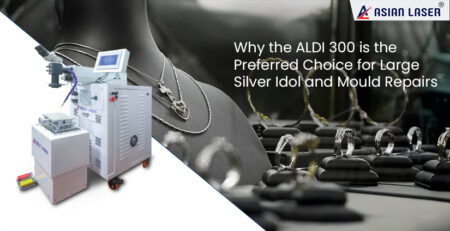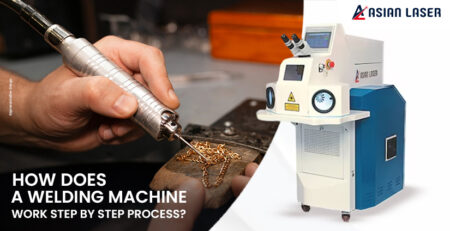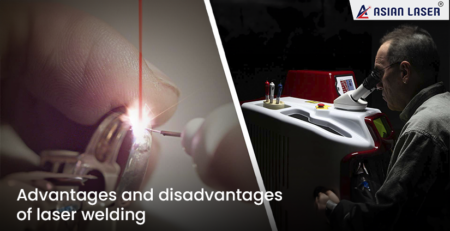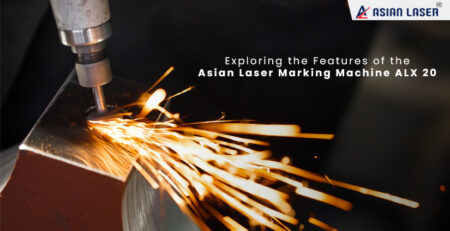Application of Lasers for Marking on Electronics
Utilising cutting-edge technologies is crucial for staying ahead of the curve in the world of electronics manufacturing.
Among these technologies, laser marking has emerged as a powerful tool, revolutionising how electronic components are labelled, traced, and manufactured.
From microchips to circuit boards, the application of laser marking has permeated every aspect of electronics production, offering unparalleled advantages in terms of speed, accuracy, and versatility.
What is Laser Marking?
Laser marking, a process whereby a laser beam modifies the surface of a material to leave a permanent mark, has gained widespread acceptance in the electronics industry due to its ability to produce high-quality, durable marks with exceptional precision.
Unlike other marking mechanisms—such as inkjet printing or mechanical engraving—laser marking machines do not involve physical contact with the material being marked. Instead, they rely on the focused energy of a laser beam to generate heat and create a permanent mark without causing damage to the underlying substrate.
Product identification and traceability are the primary applications of laser marking machines in electronics manufacturing. As electronic devices become increasingly complex and the demand for quality assurance grows, manufacturers rely on laser marking to imprint unique identifiers such as serial numbers, barcodes, QR codes, and logos directly onto electronic components.
These marks serve as a means of tracking and tracing each component throughout the production process and beyond, facilitating inventory management, counterfeit prevention, and regulatory compliance.
Moreover, laser marking offers unparalleled flexibility in marking materials used in electronics manufacturing. These include metals, plastics, ceramics, and semiconductors. Whether it’s etching a serial number on a metal casing or marking a PCB with component labels, laser systems can be tailored to meet the specific requirements of diverse materials, ensuring consistent results and optimal readability.
Applications of Laser Marking Machine
In addition to product identification, laser marking plays an imperative role in improving the aesthetics and functionality of electronic devices. With the ability to produce fine, intricate marks at high speeds, laser technology enables manufacturers to create custom designs, logos, and decorative patterns on electronic enclosures and panels. Furthermore, laser marking can add functional features such as texturing, anti-counterfeiting measures, and micro-scale identifiers, enhancing electronic products’ overall value and security.
Beyond its applications in production, laser marking also contributes to sustainability and cost-effectiveness in electronics manufacturing. Unlike traditional marking methods that require consumables such as inks, solvents, and abrasive tools, laser marking is a non-contact, non-toxic process that generates minimal waste and consumes less energy. By eliminating the need for consumables and reducing downtime associated with maintenance and tooling changes, laser marking helps manufacturers streamline their production processes and minimise their environmental footprint.
How Does Asian Laser’s Laser Marking Machine ALX 20 Work?
Asian Laser is the leading laser marking machine supplier in India. Asian Laser’s Laser Engraving & Marking Machine ALX 20 operates on the principle of laser technology, utilising a high-powered laser beam to engrave marks on various electronic surfaces with exceptional precision and efficiency. Here’s how it works:
-
Laser Source Selection
Asian Laser’s Laser Marking Machine ALX 20 is equipped with high-quality laser sources, commonly utilising fiber lasers, CO2 lasers, or diode-pumped solid-state (DPSS) lasers. The selection of the laser beams depends on the specific requirements of the application. These include the type of material to be marked, the desired marking speed, and the level of detail needed.
-
Marking Software Configuration:
The laser marking process begins with configuring the marking software according to the desired mark design or information to be engraved on the electronic surface. Asian Laser’s machines typically come with user-friendly software interfaces that allow operators to input various parameters such as text, graphics, barcodes, serial numbers, and other relevant data.
-
Surface Preparation:
Before marking, the electronic surface must be adequately prepared to ensure optimal marking quality. This may involve cleaning the surface to remove any contaminants, applying masking materials to protect certain areas from marking, or adjusting the focus and positioning of the laser beam for precise marking.
-
Marking Process Execution:
Once the surface is prepared, the marking process begins. The laser marking machine emits a highly focused laser beam onto the surface of the electronic component with pinpoint accuracy. The intensity and duration of the laser beam are carefully controlled to achieve the desired depth and clarity of marks without damaging underlying materials.
-
Mark Verification and Quality Assurance:
As the marking process progresses, integrated quality control features ensure the accuracy and consistency of the marks. Asian Laser’s machines may include real-time monitoring systems that verify the integrity of each mark, detecting any anomalies or deviations from the specified parameters. This ensures that all marked components meet the required quality standards.
-
Post-Marking Inspection and Finishing:
After marking is complete, the electronic components may undergo post-marking inspection to ensure that all marks are legible, accurate, and meet the specified requirements. Depending on the application, additional finishing processes such as cleaning, annealing, or coating may be performed to enhance the durability of the marks.
-
Integration with Production Line:
Our Laser Marking Machine ALX20 is designed for seamless integration into automated production lines, allowing for high-speed and efficient marking of electronic components. Advanced features such as programmable laser settings, robotic handling systems, and barcode scanning capabilities enable synchronised operation with other manufacturing processes, optimising overall productivity and throughput.
To Conclude:
Looking ahead, the application of laser marking machines for stainless steel is poised for further advancements as laser technology continues to evolve. Innovations such as ultrafast lasers, fiber lasers, and advanced scanning systems are expanding the capabilities of laser marking systems, enabling higher throughput, finer resolution, and greater flexibility in marking various materials.
As electronics manufacturers strive to meet the demands of an ever-evolving market, laser marking will undoubtedly remain a cornerstone technology, driving innovation, efficiency, and quality in the production of electronic devices.











